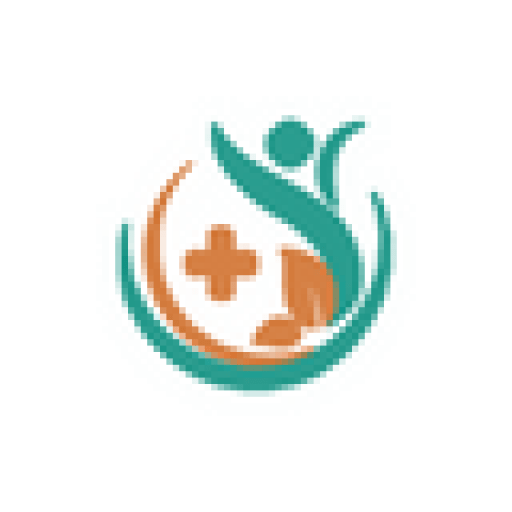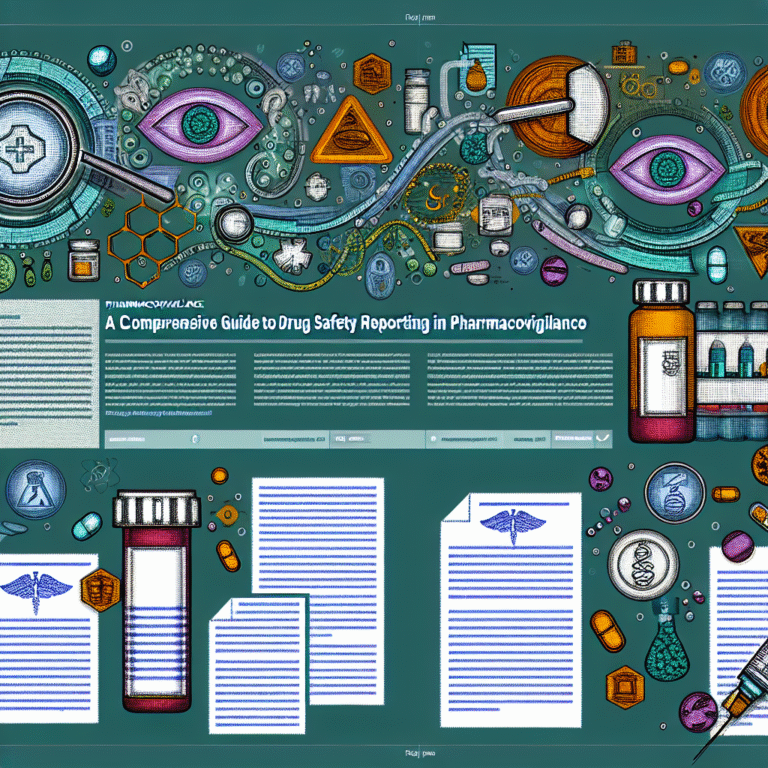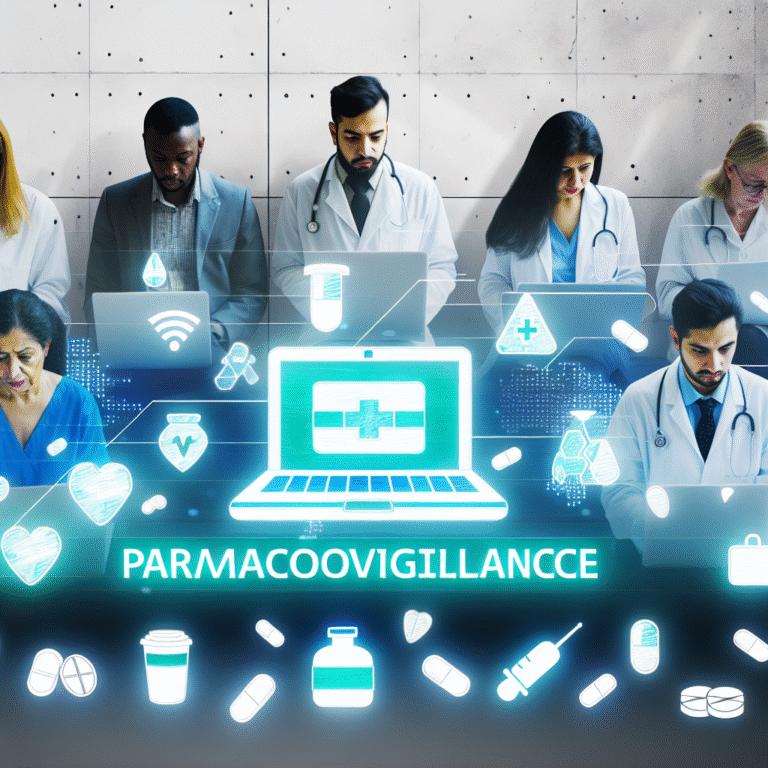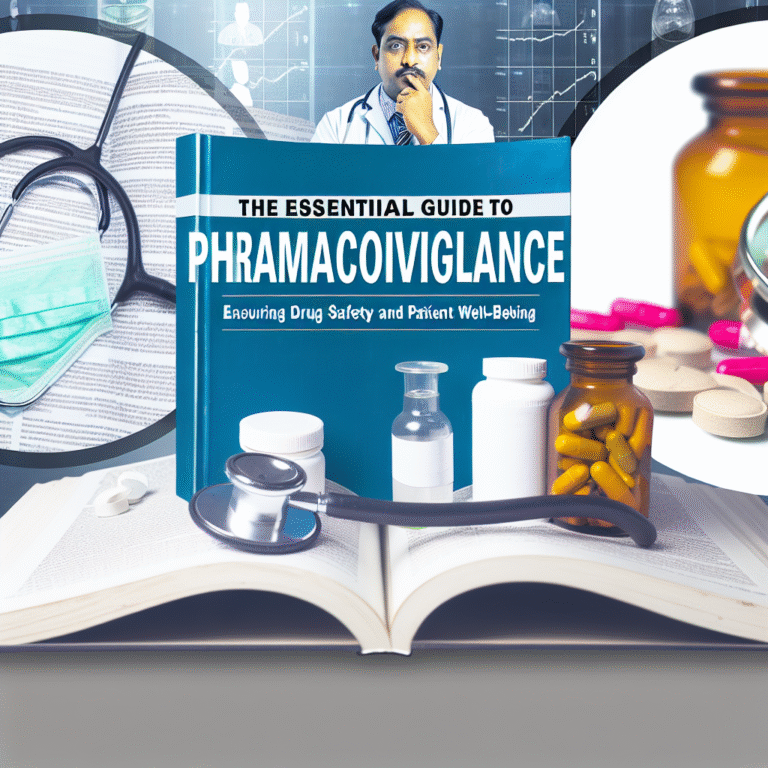The Essential Guide to Pharmacovigilance: Ensuring Drug Safety for Healthcare Professionals
The Essential Guide to Pharmacovigilance: Keeping Medicines Safe for Healthcare Workers
Introduction
Pharmacovigilance is a really important process in the world of medicine. It helps keep medicines safe by watching out for any problems they might cause. As healthcare workers, you are super important for spotting, checking, and stopping bad effects from medicines. This guide will help you understand pharmacovigilance better so you can make sure people who take medicines are safe.
Understanding Pharmacovigilance
Pharmacovigilance is all about finding, checking, understanding, and stopping bad effects or other problems with medicines. It started in the 1960s after the thalidomide disaster showed us how important it is to keep a close watch on medicines. Today, pharmacovigilance is a big part of healthcare and focuses on:
1. Finding bad reactions to medicines
2. Figuring out if a medicine’s good points are worth its risks
3. Keeping patients safe
Some key ideas in pharmacovigilance are bad drug reactions, spotting problems, and managing risks. Knowing how important pharmacovigilance is helps healthcare workers keep healthcare safe and trustworthy.
The Pharmacovigilance Process
The steps in pharmacovigilance include:
1. Finding bad reactions to medicines
2. Using systems and ways to report them
3. Checking and figuring out the data
4. Making plans to manage risks
5. Talking with everyone involved
Each of these steps helps keep medicines safe by spotting and fixing possible problems.
Finding Bad Reactions to Medicines
Bad reactions to medicines are unwanted or harmful effects after taking a medicine. They can be divided into:
1. Type A: These reactions are expected based on what we know about the medicine.
2. Type B: These are unexpected reactions that aren’t related to what we usually know about the medicine.
To find these reactions, healthcare workers:
1. Watch for signs and symptoms in patients
2. Check lab results
3. Talk to patients and ask for feedback
New tools, like electronic health records and special medicine databases, help healthcare workers find bad reactions quickly and easily.
Reporting Systems and Ways to Report
It’s really important to report any bad reactions to medicines quickly and accurately. Some famous systems around the world are:
1. WHO Program for International Drug Monitoring: This helps share data and check risks worldwide.
2. EudraVigilance: This is Europe’s database for tracking and looking at bad reactions to medicines.
3. FDA’s MedWatch: This is the system in the U.S. for reporting safety concerns about medicines.
Healthcare workers should report bad reactions as soon as possible to help create a big safety database and make public health better.
Checking and Evaluating the Data
Checking the safety data of medicines includes:
1. Finding out if a medicine likely caused a bad reaction using special methods.
2. Spotting and studying signals to find new safety problems.
3. Looking at the data closely to make the right choices and reach correct conclusions.
Careful data checking helps make recommendations based on evidence to use medicines safely and manage risks well.
Managing Risks
Managing risks in pharmacovigilance involves:
1. Making plans to reduce bad reaction risks
2. Following up on medicines after they’re on the market to keep checking on their safety
3. Taking actions like changing labels or withdrawing medicines to keep patients safe
These steps help prevent big problems with medicines and make sure they are used safely.
Talking with Everyone Involved
Good communication is really important in pharmacovigilance. Healthcare workers need to:
1. Teach patients and healthcare teams about medicine safety
2. Share safety details and advice through easy-to-understand channels
3. Keep talking with everyone involved about risks and safety
Clear communication helps create a safe and clear healthcare environment.
Lessons from Pharmacovigilance
Looking at past experiences in pharmacovigilance can teach us a lot:
1. The removal of rofecoxib (Vioxx) showed how vital it is to keep an eye on medicines after they’re approved, due to heart risks.
2. Better rules on isotretinoin use helped lower birth defects and showed how important good communication is about risks.
3. Watching COVID-19 vaccines revealed the global effort and quick response that pharmacovigilance systems are capable of.
These lessons highlight the huge effect pharmacovigilance has on public health.
Challenges in Pharmacovigilance
Doing pharmacovigilance effectively has barriers like:
1. Not enough reporting and issues with data quality
2. Lack of resources and awareness
3. Dealing with big data sets can be tricky
Solving these problems requires more training for professionals, using technology, and working together internationally.
The Future of Pharmacovigilance
New trends and technologies are changing pharmacovigilance:
1. Big data and smart computer systems allow real-time monitoring and checks.
2. Real-time systems offer instant information on medicine safety.
3. Working together globally helps exchange information and develop better policies.
These new ideas mean stronger pharmacovigilance and safer medicines everywhere.
Conclusion
Pharmacovigilance is crucial for keeping medicines safe. As healthcare workers, your active involvement is key to building a vigilant culture. We can work together to create safer ways to use medicines and improve health outcomes.
Resources and Further Learning
If you’re interested in learning more about pharmacovigilance, you can check out:
1. Books like “A Practical Guide to Pharmacovigilance” by Graham E. Dukes
2. Articles in journals such as “Drug Safety” and “Pharmacovigilance Review”
3. Websites like the World Health Organization’s Uppsala Monitoring Centre and FDA’s resources
Moreover, ongoing education and professional community networks are great for keeping up with improvements in pharmacovigilance. Join groups like ISoP (International Society of Pharmacovigilance) to meet others and boost your knowledge in this important field.






